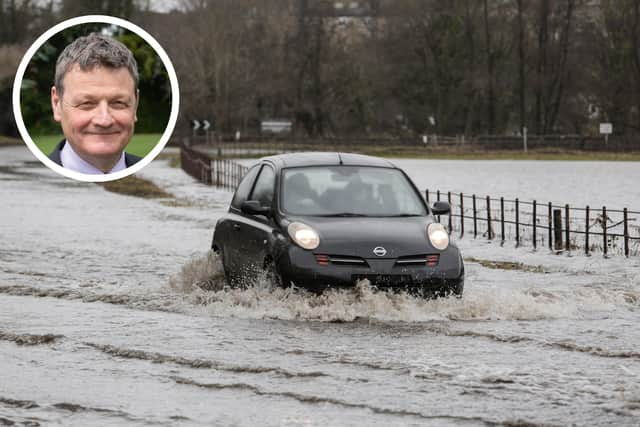Measures for North Yorkshire outlined in new strategy to tackle climate change
and live on Freeview channel 276
Next week, senior councillors on North Yorkshire County Council are due to consider a draft strategy and are expected to approve plans to embark on a major public consultation on the Document.
If approved, the public consultation on the draft climate change strategy is set to be launched within the next month and is due to last for eight weeks.
Advertisement
Hide AdAdvertisement
Hide AdNorth Yorkshire County Council’s executive member for climate change, Cllr Greg White, said: “Climate change is without question the greatest threat that the world faces, and is already impacting on communities across the globe.


“We have seen an increasing frequency of extreme weather conditions here in North Yorkshire and across the UK as a whole, which scientists tell us is clear evidence of significant changes in our climate.
“Without clear and decisive action, the situation will only get worse. However, we are committed to ensuring that we have a comprehensive strategy in North Yorkshire, especially as we look towards the launch of the new authority this spring.”
This ambition is seen as key for the nation to reach the Government’s target for the UK to become carbon neutral by 2050, and will rely heavily on North Yorkshire’s prized natural habitats as well as an increasing focus on developing cutting-edge industries in the green sector.
Advertisement
Hide AdAdvertisement
Hide AdThe draft strategy sets out how the new North Yorkshire Council will develop work that is already under way to reduce harmful carbon emissions, which are responsible for climate change.
It also outlines how the council will prepare for changes in climate.
Figures show that North Yorkshire produced 5,829 kilotonnes of carbon dioxide equivalents (kt co2e) in 2020, with agriculture equating to a third of the total, transport responsible for 28 per cent and 19 per cent coming from homes.
Initiatives which will need to be adopted include producing more renewable energy, reducing the use of fossil fuels, improving insulation in homes, encouraging the use of low-emission vehicles and promoting more active travel such as cycling and walking.
Advertisement
Hide AdAdvertisement
Hide AdNorth Yorkshire’s vast natural habitats are seen as a vitally important resource to capture carbon emissions and help prevent climate change.
There is a pressing need to conserve the hundreds of protected areas of countryside across North Yorkshire, which includes 750 local wildlife sites, 220 Sites of Special Scientific Interest, 24 national and local nature reserves and two National Parks covering the Yorkshire Dales and the North York Moors.
Among the key projects to help tackle climate change is the BioYorkshire initiative, which is being led by the University of York, Askham Bryan College on the edge of York and the Fera Sciences site at Sand Hutton.
The scheme will harness scientific expertise to develop bio-based supplies of fuel, chemicals and materials, while also supporting net-zero food production, farming and wider land use practices.
Advertisement
Hide AdAdvertisement
Hide AdIt aims to create more than 4,000 highly skilled jobs, reduce carbon dioxide emissions by 2.8 million tonnes every year in the UK, cut waste to landfill by 1.2 million tonnes annually and generate £1.4bn to the national economy.
Ambitious environmental projects such as the delivery of the White Rose Forest have also been highlighted in the routemap to become carbon negative.
The initiative is set to see seven million trees, the equivalent of 4,900 football pitches or 3,500 hectares, planted in North and West Yorkshire up until 2025, with the support of landowners and farmers and funding from the Government’s Nature for Climate fund.